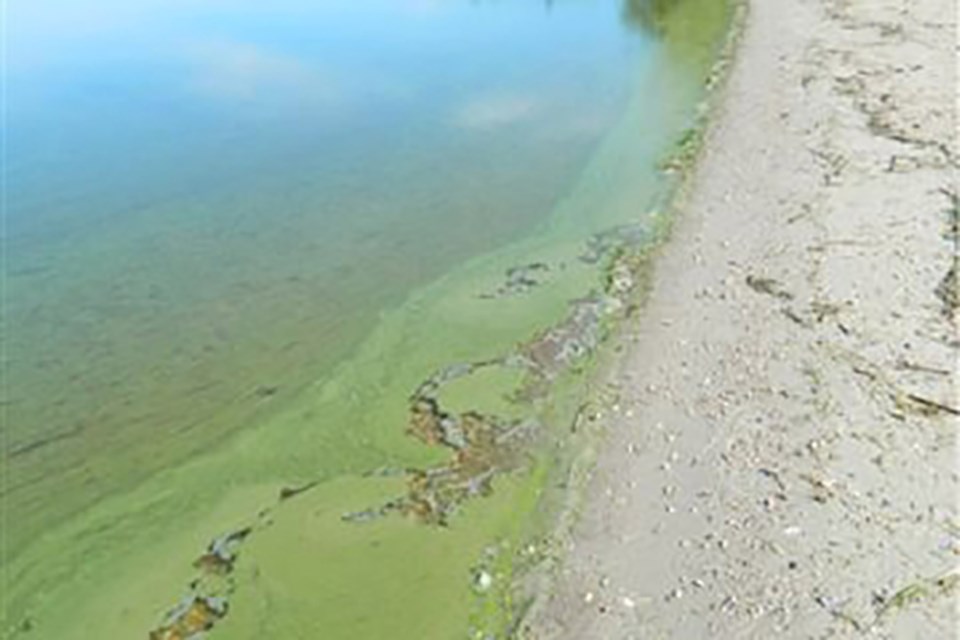BONNYVILLE - Cyanobacteria, also known as blue-green algae, has been identified in the waters of Moose Lake, according to information from Alberta Health Services (AHS).
A health advisory was released on July 7 stating visitors to the northeastern Alberta lake should watch for the algae and take precautions, such as avoiding contact with the cyanobacterial blooms.
"If contact occurs, wash with tap water as soon as possible," according to AHS.
People should not swim or wade or allow pets to swim or wade where the cyanobacteria is visible.
"Do not feed whole fish or fish trimmings from this lake to your pets," according to AHS. And, "Consider limiting human consumption of whole fish and fish trimmings from this lake, as it is known that fish may store toxins in their liver."
"As always, visitors and residents are reminded to never drink or cook with untreated water directly from any recreational body of water, including Moose Lake at any time. Boiling of this water will not remove the toxins produced by cyanobacteria. An alternate source of drinking water should also be provided for pets and livestock while this advisory is active," according to AHS.
Blue-green algae looks like scum, grass clippings, fuzz or globs on the surface of water.
It "can be blue-green, greenish-brown, brown and/or pinkish-red, and often smell musty or grassy," says AHS.
"People who come in contact with visible cyanobacteria or who ingest water containing cyanobacteria may experience skin irritation, rash, sore throat, sore red eyes, swollen lips, fever, nausea and vomiting and/or diarrhea. Symptoms usually appear within one to three hours and resolve in one to two days. Symptoms in children are often more pronounced; however, all humans are at risk of these symptoms. Exposure to the bacteria may be fatal to pets," reads the advisory.
Areas of Moose Lake where a cyanobacterial bloom is not visible can still be used for recreational purposes, even while the health advisory is in place.



